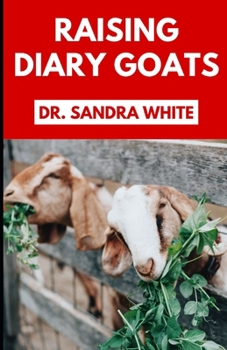Raising Dairy Goats: Your Agricultural Livestock Guide to Rearing Goats for Milk, Cheese.
BREED SELECTION, FEEDING, FENCING, HEALTH CARE, DAIRYING, MARKETING Even if you already keep backyard chickens or are raising rabbits for meat, that doesn't mean raising goats for milk is allowed. To be sure, check with your local zoning and homeowner regulations as to whether raising goats is permitted and, if so, how many you can legally have. A single goat will complain loud enough for the whole neighborhood to get the point. So plan on having at least two. They can be two does (females) or a doe and a wether (castrated male). With two does you can stagger breeding to produce milk year-round. Otherwise, you will have some months of plenty and some months without any milk. A doe must be periodically bred to refresh her milk cycle. A buck is difficult to maintain and is not worth the hassle or expense for just one or two does. Options include arranging with a nearby goat owner for stud service or using artificial insemination (AI). Your veterinarian should be able to help you find someone skilled at AI. Not all veterinarians understand goat medicine. If your local vets are not well versed in goats, at least seek an experienced goat keeper willing to help you out, should your goats ever need medical assistance. Goat owners are fond of saying a fence that won't hold water won't hold a goat. Of course, that's an exaggeration, but only slightly so. Goats are Houdinis at climbing over, under, or through a less than adequate fence, to the detriment of your (or your neighbor's) garden and landscaping. A dairy doe produces one or more kids every 15 months or so. If you try to keep them all, you'll soon be goat poor, so have a plan for dealing with those bouncing bundles of joy - and stick to it. Options include selling them or butchering them for meat. A common plan is the sell the doelings and turn the bucklings into roasts and burger. (Goat meat recipes are similar to venison recipes.) Also, learn more about managing your goat herd for optimum reproduction. If you can't be available to milk every day, you'll need to arrange for help. If you milk twice a day, morning and evening, you'll get a little more milk than if you milk only once a day. Some goat keepers optimize milk production by milking three times daily morning, noon, and evening. Depending on the breed and bloodlines, a good doe may produce as much as a gallon and a half a day soon after kidding, dwindling down to a quart or less within 9 or 10 months. Some does produce much less to start with, and their production drops quicker. Ask about the milk production of your prospective doe's dam (mother) and sire's dam (paternal grandmother). Want to discover more? Read This Book By Dr. Sandra White
Format:Paperback
Language:English
ISBN:B0BHL5X7QC
ISBN13:9798356779763
Release Date:October 2022
Publisher:Independently Published
Length:96 Pages
Weight:0.27 lbs.
Dimensions:0.2" x 5.5" x 8.5"
Customer Reviews
0 rating





